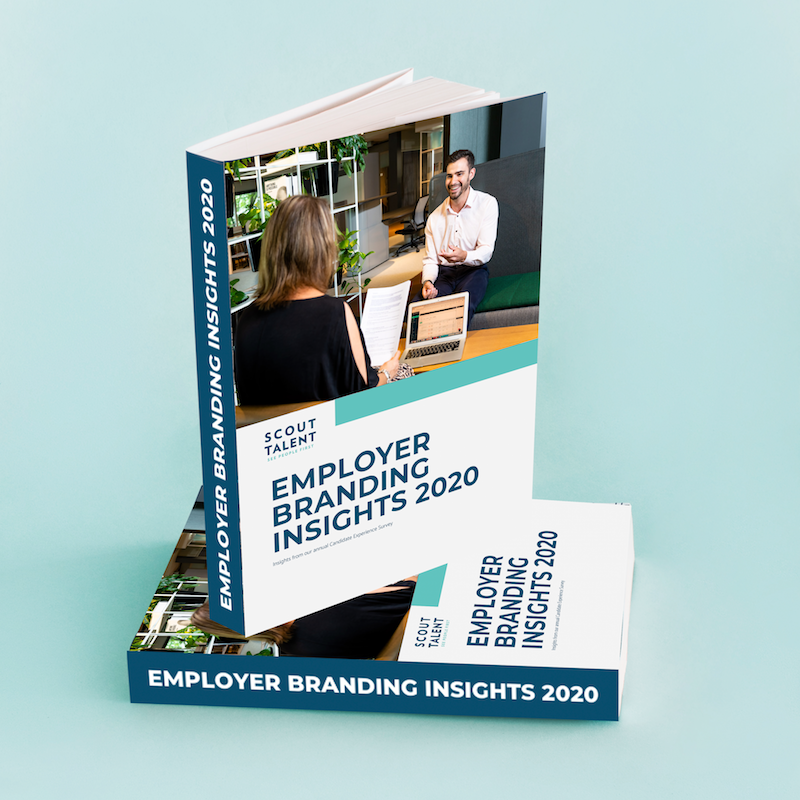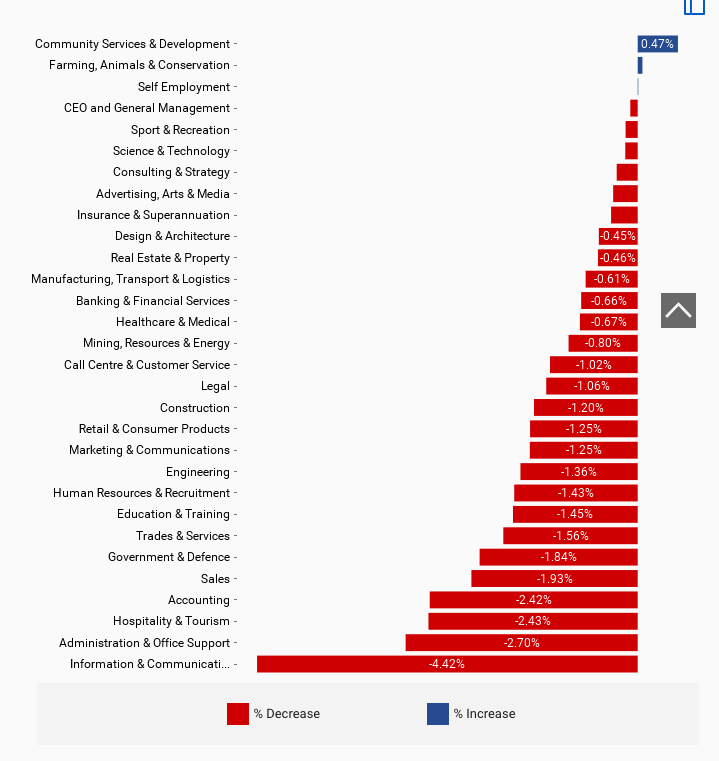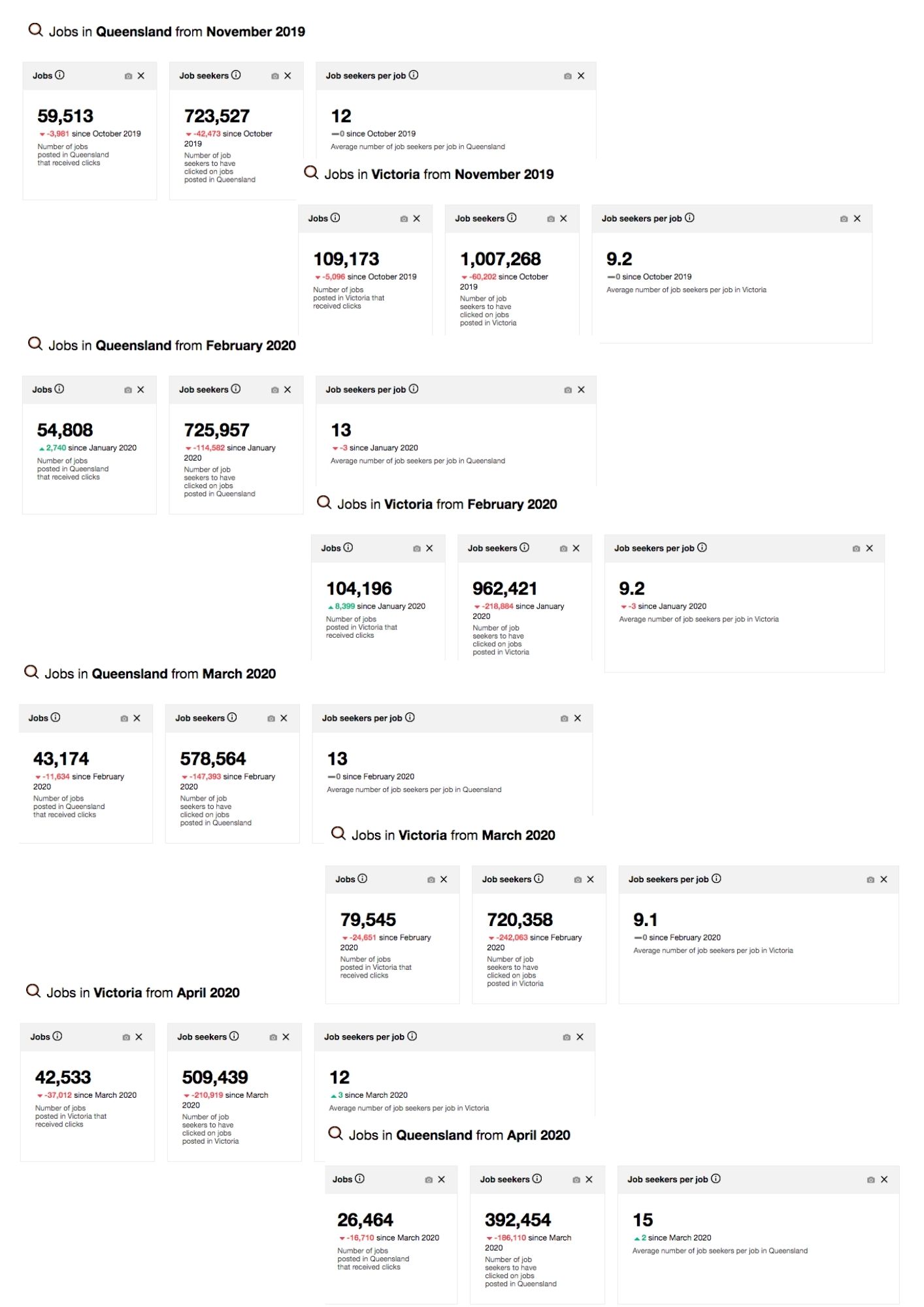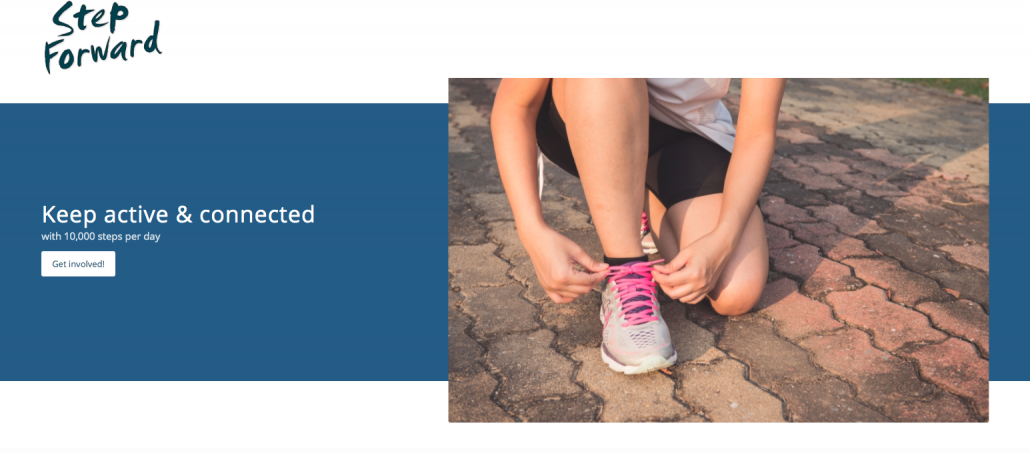Simple steps to measure and improve employee engagement
Organisations with engaged team members consistently outperform their competitors. Why? Without talented and motivated people, organisations have no hope of flourishing and staying competitive. Engaged employees are more likely to rise to meet the challenges you present them with, go the extra mile, deliver an excellent customer experience, and more. Here’s how to measure and improve employee engagement in your organisation to get the best business outcomes.
What is employee engagement and why does it matter?
Engaged employees are those who are involved in, enthusiastic about and committed to their work and workplace.
Employee engagement done well delivers some remarkable benefits. In fact, numerous studies (McKinsey, Harvard Business Review, Forbes) reveal an organisation’s ability to achieve its goals is directly linked to employee engagement levels.
Engaged employees care for and feel a sense of ownership about their organisation. This could mean proactively going the extra mile, nurturing side projects, raising innovative ideas and promoting new initiatives; or it could simply be making a positive impact on your culture or customer satisfaction.
No matter your organisation’s industry, size or location, making an ongoing commitment to having a good employee engagement strategy is the best way to reach your long-term goals.
In this guide, you’ll learn the best ways to measure employee engagement and listen to your employee voice, as well as tips for improving employee engagement and different initiatives you can implement.
Understand the key components of motivation
In his 2009 book, Drive, Daniel Pink offers a new vision for workplace motivation based on psychological research (Harlow and Deci, 1971). Pink argues that traditional “carrot and stick” approaches to motivation are outdated and don’t adequately address the needs of the modern workplace.
The new model presents the three key components that are essential to motivation: purpose, autonomy and mastery.
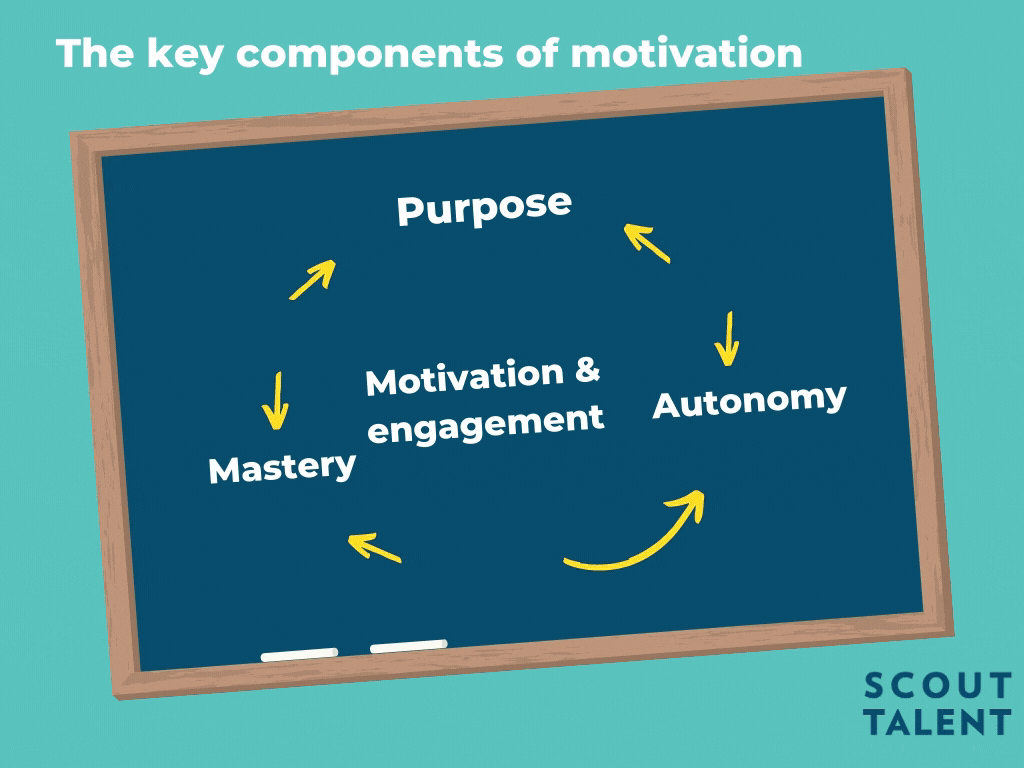
Purpose: to see the bigger picture and believe you’re working towards something larger and more important than yourself.
Autonomy: to control what you do, when you do it, and who you do it with. (This motivates us to think creatively.)
Mastery: to improve your skills or in your role.
Use this model as a framework when considering how to measure and improve employee engagement in your workplace. For example, can you use communication, collaboration and training opportunities to connect your people with your organisation’s purpose? Can you give people more ownership, opportunities for autonomy and a chance to express their creativity?
Measure employee engagement
For many organisations today, your people are your competitive advantage. But, it’s important to remember there are more work and career opportunities and choices available to them than ever before! So if you want to retain your top talent, you need to know the reasons they stay and why they might leave.
Measuring engagement is a great place to start. This allows you to have your finger on the pulse in your workforce. It also gives you the insights you need to identify problems sooner rather than later. (I.e. you don’t have to wait to hear about a problem in an exit interview, when it could be resolved sooner.)
There are a number of ways to measure employee engagement, including:
- An annual or six-monthly employee engagement survey
- Quarterly engagement pulse surveys
- Exit interviews
- Focus groups
- Informal channels.
A note on exit interviews
While exit interviews can provide useful information, they do come with two main challenges. The first is data quality. Data quality depends on how honest and forthcoming your departing employee is; some feel time pressure, or are simply unmotivated to participate. Others may not like to share negative feedback about a manager, particularly if they need references. The second challenge is the lack of a one-best-way process, because different organisations have different needs and goals.
Tip: Engaging a third-party provider to conduct exit interviews can improve data quality and help you establish a method that suits your organisation’s needs and goals.
Before you start to measure anything, you need to understand what you’re measuring and what you want to learn about. There are many layers to employee engagement, and many ways to measure it.
When done correctly, annual employee engagement surveys are a great place to start. Confidential surveys conducted by third-party providers can improve data quality, as employees are more likely to express themselves honestly and openly. This allows you to gain valuable insights you may not have been able to receive otherwise. You can also gather a mix of qualitative and quantitative data through Likert scales and open-text responses.
Annual employee engagement surveys are a great place to start.
Alternatively, you can conduct shorter pulse surveys on a quarterly or monthly basis, short monthly check-ins, 1-to-1s, open forums and/or team meetings.
Tip: Engaging a third-party provider is a great way to give people the confidence that their feedback will remain anonymous.
Every organisation is different. Choose what you think might work best for your organisation, involve your team members in the process, and test to see what works. You can ask your team members what frequency they prefer, which methods they prefer to use to deliver feedback, and what makes them feel most comfortable.
Don’t just rely on measurement tools. Train your managers and leaders to understand what engagement is, how to talk about it, and what to do if their team members are showing warning signs of disengagement. They should know how to combine collected data points with day-to-day observations to gauge employees engagement levels.
If you’re still not sure where to start, simply begin by having conversations with your people and collecting data. If you want to launch a survey in house, do your research. Engaging a third-party provider is generally best practice, as people can be reluctant to share their true thoughts and feelings if they’re not confident in anonymity. A third-party provider will also help you analyse the data and provide guidance about what to do next. What you do with the data after a survey is just as important as capturing it in the first place.
Analyse results and make a clear plan
So, you’ve completed a survey or sought feedback through another method and it’s time to analyse results. What’s the best way to make sense of it all?
Look for common themes
After measuring employee engagement, you’ll probably have a lot of data to analyse. Remember that it’s impossible to please everyone. Just because one person believes you should renovate your office or grant everyone an additional week of annual leave, doesn’t mean it’s achievable, realistic or useful for your organisation to implement.
Instead, look for common themes and work towards mutually beneficial solutions. Addressing the concerns of the majority will help you increase employee engagement overall.
Don’t ignore data because you feel like you’ve heard it all before. You may need to address low-scoring data points, such as low salaries, and either improve it, supplement it by offering alternative benefits, or highlight it so candidates are aware before they accept a job with your organisation.
Case study: one organisation we conducted an employee engagement survey for achieved low agreement scores for how employees saw their career pathways in the organisation. Managers were confused, because they knew they offered competitive and attractive progression and upskilling opportunities. The problem they identified was that they were not being communicated well enough. After improving their communication strategy, they were able to see agreement levels in this category increase.
For high-scoring areas, shout it from the rooftops! If you have great leaders and hands-on managers, tell candidates about it. Share stories on social media and your website. Remind your existing team about the things they love, build it into your employer brand and make it part of your competitive advantage.
Drill deeper
Don’t assume anything when it comes to employee engagement! As demonstrated in the example above, some data calls for further investigation. Open-text responses in your survey, informal discussions or focus groups can provide you with more clarity to take action.
Don’t shrug your shoulders at areas in your organisation that achieve average agreement levels. What can you do to improve these areas, as well as your lower-scoring areas?
Make a plan
After you’ve made sense of the data, it’s time to create a plan. Be realistic about the timeframes in which you can implement new initiatives. Consider establishing short-term, medium-term and long-term goals. Working on engagement is not an overnight project. Rather, it’s a journey.
Engagement data can be complex and assessing trends can take time.
The worst thing you can do is ask employees for their feedback and not take action or communicate results.
When you obtain employee feedback, it’s critical to take action. We’ve heard of the damaging consequences organisations face, particularly when they renege on their commitment to conducting surveys (because it’s too hard)! This only tells your team members that your organisation isn’t willing to listen or act on supporting their needs.
If you’re finding it challenging to do it yourself, getting support from third-party providers can give you more clarity and provide a great return on investment. You could also try reducing your survey to the most important 10-15 key questions you want to focus on.
Communicate results and implement change

Share the results and action plan from your employee engagement survey with your team
After your team members have taken the time to submit their feedback, they’re likely to be interested in learning about the results. After analysing results and creating a clear action plan, you’re ready to communicate with your team members.
Communicate your plans and the reasons for these decisions. The more you can inform them about your action plan, the more buy-in you’ll be able to obtain (even if they don’t agree with 100% of your decisions).
Tip: Collecting employee feedback and not acting on it can have more negative consequences than not collecting feedback at all. In fact, it can further exacerbate employee dissatisfaction.
Did you know you can use your employee engagement data in your recruitment and employer branding to tell the real story about your organisation? Looking at your high-performing areas and things you do well is a great place to start.
A presentation is the most effective way to communicate results. Allow the opportunity for them to answer questions. Being prepared with your action plan will allow you to answer questions with confidence.
If you’re going to go down the road of running a survey, make sure you leave biases at the door. You need to be prepared to hear potentially uncomfortable feedback and have some tough conversations with your leadership team about how your team members are feeling. The only way to instigate real change is to take it all in—the good and the bad—and not ignore issues that seem like they’ll be difficult to turn around. If you commit to digging deeper into important issues, your current and future workforce will thank you!
Offer career progression, training and development
To improve employee engagement, increase workplace productivity, and build a motivated team, offering training and development is a proven strategy to help you achieve your goals.
In our latest candidate survey, we asked what factors influence candidates to apply for a job. “Doing work that utilises my skills and talents,” was a top-scoring category. Seeing this result might seem quite obvious! But what can we do with this insight?
During performance reviews, team meetings and 1:1 meetings, ask employees about how well they feel their skills are being utilised in their current role. In particular, focus on employees who have been with your organisation for more than a year, as this group can be most at risk.
Share your career progression framework with team members
How are you sharing career progression opportunities with your team members? They may have their own thoughts about areas they want to develop. If not, help them to understand gaps in their skillset, how they can grow them internally or if you can support them to find external development pathways. Help them envision their future with your organisation, and work towards it together.
Provide senior team members with new challenges
You senior team members can be a powerful asset. But many organisations rely on them without assessing their engagement levels. New challenges can reignite their engagement and passion in your organisation. This doesn’t have to be a new job. It could be opportunities to learn, mentor, undertake a new project or join a cross-functional team. Talk to them about different avenues you can explore, and whether or not it’s realistic for you to deliver a new challenge.
Create learning opportunities that tie your team members to your organisation’s purpose.
If you haven’t established a career progression framework, it’s time to build one. Not only will it help employees, but it will also help with planning and hiring for the future, as you can plot future hiring needs and assess your current teams’ capabilities.
Create learning opportunities that tie your team members to your organisation’s purpose. Give them agency and help them improve their skills and in their role.
Tie training to a clear purpose, as people need to understand how it fits into the bigger picture, the organisation, their team and their own success.
Incorporate training and development into your employee lifestyle
There are many ways you can incorporate training and development into your employee lifecycle, such as:
- Onboarding – you can encourage new employees to select a project of choice as part of their onboarding process, encouraging them to look for areas of improvement and provide a solution.
- Structured time for passion projects – Time for projects that fall outside of day-to-day work provides team members with great sense of autonomy and purpose. It should offer benefits to your organization, for example, fixing a software bug, or identifying business improvement processes.
- Collaborative goal setting – Encourage autonomy and mastery by involving people in setting their own goals and taking part in collaborative goal setting.
- Linking mutual goals – Help people to see the link between their goals, their team’s goals, and how these link to the businesses’ wider goals, and in doing so help them feel connected to a greater sense of purpose.
Create a culture of collaboration and upskilling
Use technology to enhance collaboration and allow people to share their ideas anywhere, anytime. Collaboration creates opportunities for employees to explore new ideas together, acquire new skills and increase their knowledge.
We typically view collaborative learning as being done in face-to-face contexts. However, technology is a powerful way to facilitate collaborative learning experiences. There are many amazing online training platforms, including Slack, Yammer, Zoom, Microsoft Teams and Scout Learning.
Make collaborative learning a regular occurrence, for example, at the start or end of the day, or in short bursts. You can use things like meeting discussions, role play and collaborative problem-solving. This has the added benefit of helping your team to bond, build trust and support each other to drive better organisational outcomes.
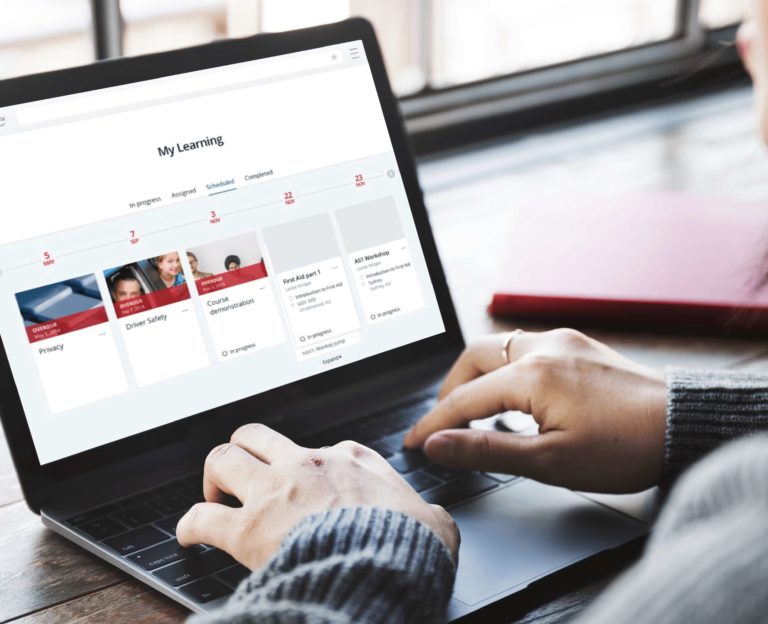
An online Learning Management System is an affordable way to offer training and development to your team members.
Involve managers
Managers can play a really important part in creating learning opportunities for their team to develop the skills needed to achieve their goals. Empower them to use your learning platform to assign training that aligns with your organisation’s goals.
Set ‘Goldilocks tasks’ to upskill people
Goldilocks tasks involve stretch goals; that is, ambitious targets that challenge what people deem possible. They often involve collaborative work and have a clear end goal. For example, you could ask your team to resolve bottlenecks in a system, or to improve your organisation’s customer service.
Incorporate peer-to-peer recognition
Peer-to-peer recognition makes people feel more valued, and in turn, care more about what they do. It doesn’t have to be the sole responsibility or your manager or trainers; buddy and peer feedback can be just as important and motivating.
Incorporate reward and recognition
Employees’ relationship with their work shouldn’t be one-sided. How long would we remain in a romantic relationship or friendship with someone who didn’t bring out the best in us? Relationships need to be two-sided with both parties benefitting, feeling encouraged, receiving praise and love. The same can be said about our relationships with work.
Employees are looking for more than salaries, benefits and incentives. An employee can have the same tangible rewards (salary, benefits, bonuses) working for another company (including talent/business competitors) as they do at your organisation. The difference in why they decide to stay at your organisation and not join a competitor is in the intangible rewards that you offer. Employee engagement via recognition is a large part of this intangible, but highly relevant, strategic advantage.
Employee recognition can be a low-cost strategy to increase employee engagement with a big impact! In today’s competitive talent landscape, employees are less likely to be tempted by LinkedIn messages from recruiters if they know they’re appreciated and valued in their current organisation. Only one in three workers strongly agree that they received recognition or praise for doing good work in the past seven days (Gallup, 2019). This is echoed in our work with clients across a range of industries; many employees say that they don’t necessarily need a higher salary to feel recognised, they just want someone to let them know they’ve done a job well done.
When was the last time you gave or received organic recognition to someone in your organisation?
Acknowledging an employee’s good work can be as simple as a “thank you” note left on their desk, a shout-out on a company-wide call or an email from someone on their team. It’s important to understand how to give recognition, as not everyone likes to be praised in the same way. Some ideas include:
- offering recognition with an award or certificate
- acknowledging team members contributions at a company-wide or team event
- public recognition or acknowledgement through a company-wide email or intranet
- private recognition from a peer, boss or customer
- highlighting that a promotion or increase in role responsibility was because of an individual’s actions and work
- monetary rewards such as a voucher, prize, or pay increase.
Reward and recognition don’t need to be linked to performance reviews or formal conversations. All levels of the business should be encouraged to give and receive recognition and acknowledgements for their achievements and good work; it shouldn’t just come from the top down. However, praise from senior leaders can often be the most impactful for some individuals, giving them the feeling they’ve been seen by people of influence. If you understand what methods of reward and recognition resonate best with your teams, and the individuals in those teams, creating a culture of recognition will positively impact engagement levels in your organisation.

Cultivate health and wellbeing
Do you remember the last time you went on a health kick? If so, did you see some great benefits such as increased energy, confidence and mental health? Well, you can see those same positive changes in your workplace by creating a culture of health and wellbeing.
Numerous studies have shown the employees who lead a healthy lifestyle are happier in the workplace and show higher rates of engagement. This results in higher levels of focus and productivity. These employees also have fewer sick days, not only because of their strong immune system, but because they’re less susceptible to stress (a significant driver of poor health).
Employees who add exercise into their workday are 50% more likely to have higher productivity levels, as well as decreased absence rates (when compared to employees who aren’t regular exercisers). (Population Health Management)
Increasingly, corporate wellbeing initiatives are starting to become more integrated into organisations. In addition to being a nice perk for employees, this trend reveals organisations are seeing increased ROI from these types of initiatives.
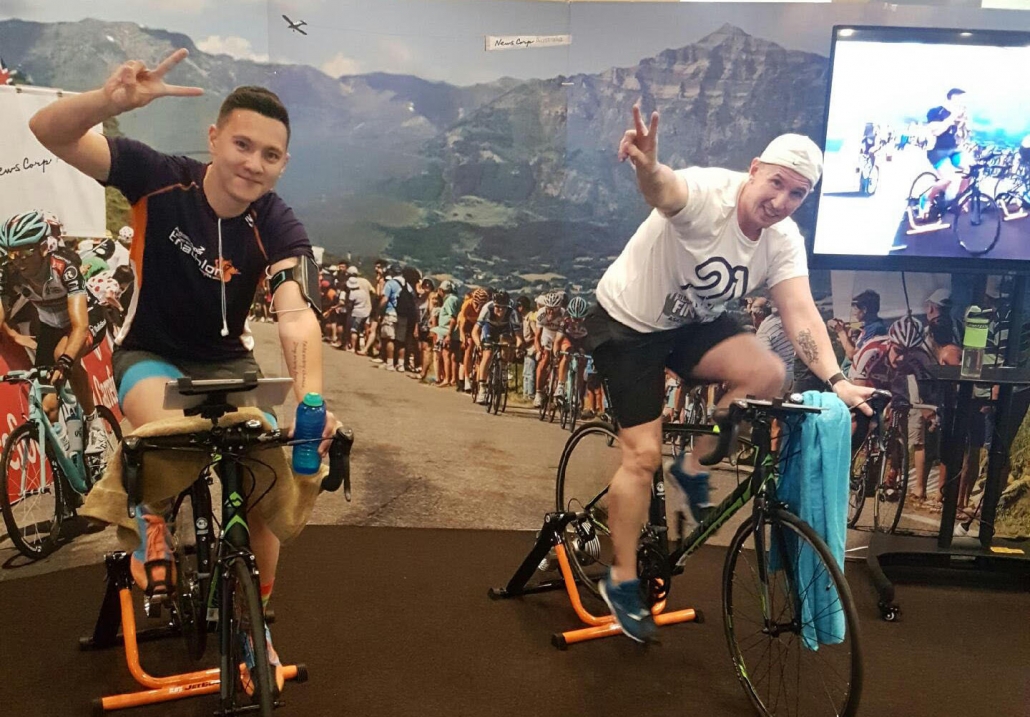
Mark Simpson, Business Performance Director, Queensland shares how NewsCorp promotes health and corporate philanthropy, and increase engagement.
Overcome challenges
Organisations typically face three main challenges when trying to implement a wellness initiative. These include: not having enough buy-in, having a low budget, or they’re just not sure what to do. Try to narrow it down to target a specific area of wellness, such as healthy eating, mental wellness or fitness. Use the examples below for inspiration.
If you have a low budget, get creative and design a low-budget option. You can also consider different ways to pitch your ideas when requesting budget approval for initiatives. For example, you could ask to split costs across departments. Or, you could present the expense as cost per participant, instead of a lump sum. Consider all the areas in your organisation that could benefit, and communicate this well. Wellness initiatives have a powerful impact on employee engagement, and they’re also great for your overall employer brand. You can even use these initiatives as a customer engagement opportunity.
Ideas for wellness initiatives
If you’re looking for some inspiration, here are some ideas to get you started.
Healthy eating:
- Invite a speaker to give a talk in your workplace about nutrition
- Invite a presenter to visit your workplace and demonstrate how to prepare some healthy meals
- Ask your team members to send through their favourite healthy recipe and create a digital company recipe book.
Mental wellbeing:
- Invite a guest speaker to talk about how to deal with stress
- Buy a subscription to a wellbeing app for your team members to use
- Offer virtual yoga and meditation classes
- Offer financial health checks to help your team manage their money well
- Provide care packages.
Fitness:
- Encourage team members to exercise in their lunch hour by allowing them to stay in their activewear for the rest of the day (should their calendar permit)
- Choose a fitness program
- Establish a walking or cycling club.
When all said and done, there’s no need to reinvent the wheel. Tried and true initiatives often work best.
Gain buy-in
If you choose to run a corporate wellness event, the success of your event will depend on getting buy-in. Talk to your managers and key decision-makers before selecting your initiative. Survey your people and understand their interests (e.g. running or mediation?) so that you’re choosing an initiative to engage the majority. It’s good to gain their buy-in from the beginning.
Plan
Once you’ve determined an initiative you think will work well for your organisation, plan ahead and break down the project in simple steps. Form a committee to share the workload and see if you can get different areas in the organisation involved so you have champions in every department.
Tip: Consider deadlines and significant events, like school holidays.
With respect to resourcing, you might like to consider starting small, and growing it over time. Consider how long you want to run the initiative for.
Use clear communication about the “who, what, when, why and how”. For example, you might like to send an email and back it up through other communication channels (e.g. Slack, Yammer, Chatter, mentions during team and weekly meetings).
Measure
Clearly define the objectives of your initiative and how to measure them. For example, if your objective is to increase activity levels of team members, record your team’s average steps per day at the start of the challenge, and again at the end, to assess the impact of your initiative.
Establish benchmarks and continue to measure results
Employee engagement is an ongoing process. As stated previously, a failure to conduct regular surveys says one thing: you don’t care about your employees’ opinions.
Giving your employees a platform to share feedback gives them a chance to feel heard and express their opinions. It’s an invitation for them to be part of a conversation and gives people a stronger sense of ownership, and the knowledge that their feedback can make a difference.
Compare your survey results year on year. Benchmarking this data can help you better understand how your organisation’s engagement levels are tracking over time and how you can improve it. Measure your organisation against yourself. Comparing past results provides context and will help you create your action plan.
Final thoughts
Employee engagement isn’t just “soft”, intangible, feelings-based reviews about how people feel at work. Employee engagement has a real impact on your organisational success and should be considered a key part of every business strategy.
You can’t improve engagement levels with pool tables, beers and spending time socialising alone (although those can be nice things to have!). These things don’t solve core problems. You improve engagement by listening to employees, ensuring there is recognition in the workplace and creating ongoing feedback loops.
Employee engagement has a real impact on your organisational success and should be considered a key part of every business strategy.
Employees need to feel supported yet challenged, know what their future looks like with your organisation and understand how they’ll be supported to achieve it. Top talent has options. You need to know why your high-performers choose to stay, and what might make them leave. So launch a survey, host internal focus groups, create a plan and make engagement one of your competitive advantages!
Understand what motivates people, look for ways to create learning opportunities that give people a sense of purpose and agency, allow them to improve in their role and develop better skills. If you give people a chance to explore new ideas, acquire new skills, and increase their knowledge, in return, you’ll end up with a more skilled team, increased productivity and higher engagement.
Offer reward and recognition in ways that aren’t directly tied to performance reviews or formal conversations. Encourage it throughout all levels in your organisation, acknowledging people for their achievements and hard work.
Don’t underestimate the power of wellness initiatives. Implement initiatives and measure their success. Use results to regularly report on—and celebrate!—your successes. Get everyone involved and use great communication across various channels to continue to gain buy-in. By measuring the success of your initiative, you’ll be able to get similar initiatives approved in the future, and understand ways to improve.
Ideally, everyone has a role to play in employee engagement. Just remember, it’s an ongoing process that delivers massive rewards.
About the authors

Victoria McGlynn is an Employer Branding Specialist and Marketing Content Producer for Scout Talent Group. Throughout her professional experience, she has used effective storytelling and an authentic voice to help organisations achieve the best business outcomes through crafting effective copy. In addition to producing marketing and advertising copy, her writing has been awarded, shortlisted, and featured in various fashion, culture, lifestyle, and professional publications. She is passionate about reading, writing, sharing and learning.

Clare Garrity is Head of Employer Branding at Scout Talent Group. With qualifications in HR and International Management, she has extensive experience in talent acquisition, people & culture, employer branding and employee engagement. In her current role, she delivers tailored employer branding solutions for Scout Talent Group’s clients. She loves building relationships, helping clients to enhance and promote their cultural values, developing strategies to drive engagement, and seeing those strategies adopted and implemented by teams.

